Business & Finance
15 Practical Strategies for Technical Communication
In the dynamic landscape of technical communication, mastering the art of conveying complex information clearly and concisely is paramount. Effective technical communication facilitates understanding and enhances collaboration and problem-solving within a team. In this comprehensive guide, we delve into 15 Practical Strategies that will elevate your technical communication skills to new heights.
What is Technical Communication?
Technical communication is the art of conveying complex information clearly and concisely to a specific audience. It involves creating documents, such as manuals and reports, to make technical concepts accessible to individuals who may not have expertise in the subject. Key elements include clear language, visual aids, and logical organization. The goal is to facilitate understanding and action, bridging the gap between experts and end-users in specialized fields.
15 Practical Strategies for Technical Communication
Here are the 15 practical strategies for technical communication
1. Understand Your Audience
Before crafting any technical document, it’s crucial to have a deep understanding of your audience. Tailor your communication style, language, and level of technical detail to meet the needs of your readers. Whether it’s a novice user or a seasoned professional, catering to your audience fosters engagement and comprehension.
2. Use Clear and Precise Language
Clarity is the cornerstone of effective technical communication. Embrace simplicity in your language without sacrificing accuracy. Avoid jargon when unnecessary and opt for precise terms to convey your message. Ambiguity can lead to confusion, hindering the communication process.
3. Create Visual Aids for Enhanced Understanding
Visual aids such as diagrams, charts, and infographics can significantly enhance the comprehension of complex technical concepts. Leverage these tools to break down intricate information into digestible components, making it easier for your audience to grasp the subject matter.
4. Establish a Logical Structure
Organize your content in a logical and structured manner. Use headings, subheadings, and bullet points to guide your readers through the information seamlessly. A well-structured document enhances readability and helps users locate specific details quickly.
5. Provide Context and Background Information
Offering context and background information sets the stage for your readers. Explain the relevance of the technical information, providing a broader understanding of its significance. Contextualization makes the content more relatable and meaningful.
6. Use Active Voice
Opt for the active voice in your writing to infuse clarity and directness into your communication. Active voice emphasizes the doer of the action, making sentences more concise and impactful.
7. Utilize User-Friendly Formatting
Consider the visual appeal of your documents. Use user-friendly formatting, consistent fonts, bullet points, and adequate spacing. A well-formatted document not only enhances readability but also conveys a sense of professionalism.
8. Encourage Feedback and Collaboration
Foster a culture of collaboration by encouraging feedback from your audience. Create avenues for communication, whether through surveys, forums, or direct interactions. Embracing feedback facilitates continuous improvement in your technical communication strategies.
9. Stay Updated on Industry Trends
Technical fields are constantly evolving. Stay abreast of the latest industry trends, updates, and innovations. Integrating current information into your technical communication ensures relevance and positions you as a credible source of knowledge.
10. Address Common Pain Points and FAQs
Anticipate the questions and challenges your audience may face. Address common pain points and frequently asked questions within your technical documentation. Proactively providing solutions fosters user confidence and reduces potential roadblocks.
11. Incorporate Real-World Examples
Illustrate technical concepts with real-world examples. Relatable scenarios make abstract ideas more tangible and aid in understanding. Strive to connect theoretical concepts with practical applications to enhance the overall learning experience.
12. Emphasize the Importance of Security
Technical communication, especially in fields dealing with sensitive information, emphasizes the importance of security measures. Clearly articulate best practices for safeguarding data, ensuring your audience is well-informed and compliant with security protocols.
13. Provide Step-by-Step Guides
Break down complex processes into step-by-step guides. A sequential approach simplifies intricate tasks, making them more manageable for your audience. Delineate each step, accompanied by relevant visuals if possible, for a foolproof understanding.
14. Optimize for Accessibility
Ensure your technical communication is accessible to all users, including those with disabilities. Incorporate features such as alt text for images, descriptive links, and accessible document formats. Accessibility not only broadens your audience but also aligns with ethical communication practices.
15. Seek Continuous Improvement
Technical communication is an evolving discipline. Regularly evaluate and enhance your communication strategies based on feedback, industry developments, and emerging technologies. A commitment to continuous improvement solidifies your position as a reliable source of technical information.
Conclusion
These 15 Practical Strategies for Technical Communication are indispensable tools for crafting effective and impactful messages. Technical communication is not just about disseminating information; it’s about creating a seamless and empowering experience for your audience. Stay committed to improvement, embrace industry trends, and implement these strategies to excel in the dynamic world of technical communication.
